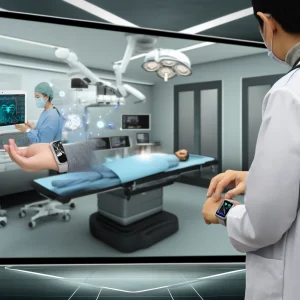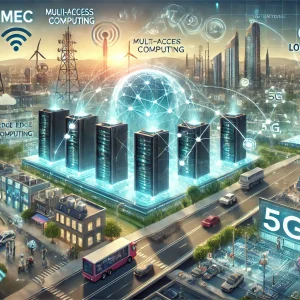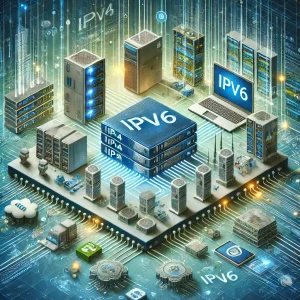
In the rapidly evolving landscape of networking, maintaining optimal performance and security has become increasingly challenging. As networks grow in complexity, the need for advanced tools to simulate networks for testing and management is paramount. Enter digital twins – a revolutionary concept that promises to transform network management by providing a virtual replica of physical networks. This blog delves into the concept of digital twins in networking, exploring their benefits, applications, and how they can be effectively implemented to enhance network testing and management.
Understanding Digital Twins
A digital twin is a virtual model that accurately reflects a physical object, system, or process. In the context of networking, a digital twin is a virtual replica of a physical network, including its components, configurations, and behaviors. This virtual representation allows network administrators to simulate networks for testing and management without interfering with the actual network.
The concept of digital twins originated in the manufacturing sector, where they are used to monitor and predict the performance of physical assets. However, their potential in the networking domain is immense, offering a new way to manage increasingly complex network infrastructures.
Benefits of Simulating Networks for Testing and Management with Digital Twins
- Enhanced Testing and Validation: Digital twins enable comprehensive testing of network changes, configurations, and updates in a controlled virtual environment. This reduces the risk of disruptions and downtime, as potential issues can be identified and addressed before implementation.
- Proactive Maintenance: By continuously monitoring the digital twin, network administrators can predict and prevent potential failures. This proactive approach to maintenance helps in minimizing downtime and improving network reliability.
- Optimized Network Performance: Digital twins provide insights into network performance, helping administrators to identify bottlenecks, optimize resource allocation, and enhance overall efficiency.
- Improved Security: Security vulnerabilities can be tested and mitigated in the digital twin before they impact the physical network. This preemptive approach enhances the overall security posture of the network.
- Cost Savings: By simulating networks for testing and management in a digital twin, organizations can avoid costly errors and reduce the need for physical testing equipment and resources.
Applications of Digital Twins in Networking
- Network Design and Planning: Digital twins can be used to simulate different network designs and configurations, allowing organizations to select the most efficient and cost-effective setup. This is particularly useful for large-scale networks and data centers.
- Performance Monitoring and Optimization: Continuous monitoring of the digital twin enables real-time analysis of network performance. This helps in identifying and resolving performance issues promptly, ensuring optimal network operation.
- Security Testing and Compliance: Digital twins can be used to simulate cyber-attacks and test security measures. This helps organizations to strengthen their defenses and ensure compliance with security standards and regulations.
- Troubleshooting and Incident Response: In the event of a network issue, digital twins can be used to replicate the problem in a virtual environment. This allows for quicker diagnosis and resolution, minimizing the impact on the actual network.
- Training and Development: Digital twins provide a safe and controlled environment for training network administrators and testing new technologies. This enhances the skills and knowledge of the IT team without risking network integrity.
Implementing Digital Twins for Simulating Networks for Testing and Management
Implementing digital twins in networking involves several key steps:
- Data Collection: The first step is to collect detailed data about the physical network, including its components, configurations, and performance metrics. This data forms the foundation of the digital twin.
- Model Creation: Using the collected data, a virtual model of the network is created. This model should accurately reflect the physical network’s structure, behavior, and performance.
- Simulation and Testing: The digital twin is then used to simulate various network scenarios, configurations, and changes. This helps in identifying potential issues and optimizing network performance.
- Integration and Monitoring: The digital twin should be integrated with the physical network to enable continuous monitoring and analysis. This integration allows for real-time updates and adjustments to the digital twin based on changes in the physical network.
- Analysis and Optimization: Continuous analysis of the digital twin provides insights into network performance, security, and reliability. These insights can be used to make data-driven decisions and optimize the physical network.
Challenges and Considerations
While the benefits of simulating networks for testing and management with digital twins are significant, there are several challenges and considerations to keep in mind:
- Data Accuracy: The effectiveness of a digital twin depends on the accuracy and completeness of the data used to create it. Ensuring data accuracy is critical for reliable simulations and analyses.
- Complexity: Creating and maintaining a digital twin of a complex network can be challenging and resource-intensive. Organizations need to have the necessary expertise and tools to manage this complexity.
- Integration: Seamless integration between the digital twin and the physical network is essential for real-time monitoring and updates. This requires robust integration capabilities and interoperability between different systems and tools.
- Security: While digital twins enhance network security, they also introduce new security challenges. Protecting the digital twin from cyber threats is crucial to ensure the integrity and reliability of the simulations and analyses.
- Cost: Implementing and maintaining digital twins can be costly. Organizations need to weigh the benefits against the costs and ensure a clear return on investment.
Future of Digital Twins in Networking
The future of digital twins in networking is promising, with advancements in technologies such as artificial intelligence (AI), machine learning (ML), and the Internet of Things (IoT) driving their evolution. These technologies enhance the capabilities of digital twins, enabling more accurate simulations, predictive analytics, and automated optimizations.
As networks continue to grow in complexity, the adoption of digital twins is expected to increase. Organizations that embrace this technology will be better equipped to manage their networks, enhance performance, and stay ahead of emerging threats.
In conclusion, digital twins represent a powerful tool for simulating networks for testing and management. By providing a virtual replica of physical networks, they enable organizations to simulate, analyze, and optimize their network infrastructure in a controlled environment. While there are challenges to consider, the benefits of digital twins far outweigh the drawbacks, making them an essential component of modern network management.





